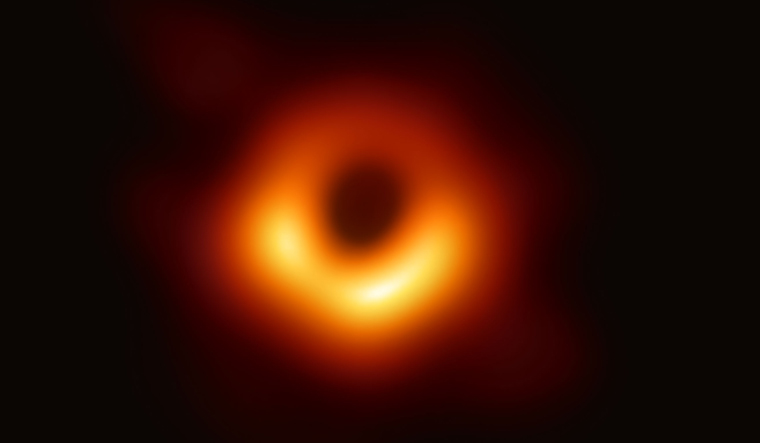Four months into 2019, the whole world saw something with their own eyes everyone thought was impossible to see. April 10 went down in history as the day the first ever image of a black hole was released.
Before that, black holes were one of the biggest mysteries of space and many of the concepts raised regarding one were largely myths. The said groundbreaking revelation had turned what was once a long-running imagination of the mind into what is now a perceptible reality.
Ever since, this year’s April has proved itself to be one of the most innovative months for space. The famous study of the Kelly twins, which was released on the 11th, proved to be a milestone for understanding the impact of space’s atmosphere on the human body. The world’s biggest plane took flight on April 13. ‘Marsquakes’ were detected for the first time in the once-assumed ‘dead red planet’. Many more landmark works could be mentioned here but basically, April 2019 was a turning point for the history of astronomy. Something to look forward to: NASA and FEMA are currently working on how to prepare for a (supposed future) asteroid strike.
The images initiated a ‘new era for astrophysics’. It has not even been a whole month since yet astronomers are now contemplating, in response to a recent study, whether a ‘new physics’ has to be developed altogether.
If you have ever made a google search ‘How old is the universe?’, it is most likely that you saw that the results stated it was somewhere around 13.7 billion years old. However, according to this new study, which was published in the Astrophysical Journal, it is actually a billion years younger.
Measuring the age of the universe
To calculate the age of the universe, one of the two methods astronomers can resort to is calculating the age of the oldest object in it. The universe can not be younger than the oldest object in it - right? In 2013, an European Space Agency used their telescope, Planck, to capture the oldest light in the universe. This was pivotal in determining the age of the universe.
Another method is calculating the rate at which or how fast the universe is expanding. This is done by the Hubble’s constant. To understand this, it is fundamental to know that galactic bodies are constantly moving further and further away from our planet. This does not mean that galactic bodies are moving away from ‘earth’ specifically, rather it means that the universe is expanding and the distance between such galactic bodies and our planet changes as a result. So, to calculate the Hubble’s constant, astronomers calculate how far one one celestial body is from the Earth and how rapidly it is moving away from us.
The lead author of the study, John Riess, is one of the 2011 Nobel Prize winners in Physics for his part in discovering dark energy. He decodes this by using an analogy: “Let’s look at a two-year-old and see how tall they are, and then try to figure out how tall they are going to be when they grow up. Then we could actually wait until they grow up and measure them. If they far exceed that [extrapolation], we’d have a real mystery on our hands. Something isn’t right in our understanding of how this person grew.”
According to the number from the recent study, it does far exceed expectations. Data from Planck showed that the Hubble’s constant was estimated to be somewhere around 67.4 kilometres per second per megaparsec. On the other hand, Riess’ study concludes the expansion rate to be somewhere around 74.03 kilometres per second per megaparsec. This means that the universe is actually expanding nine percent faster than expected.
So, the Hubble’s constant is not constant anymore? This is initiating the latest in a long series of baffling controversies about the Hubble’s constant - which is regarded as ‘the most important number in cosmology’.
Some argue that the recent study could have have been a product of incomplete or unseen errors. Others argue that something sped up the acceleration of the universe some time in the last dozen billion years. However, according to Riess, the chances of the mismatch being accidental is 1 in 100,000. He and others support that both calculations seem sensible and are accurate. Nevertheless, the experts still seem bewildered by the new evidence.
NASA astrophysicist said that this leaves them with two ‘obvious’ explanations: “1. We’re making mistakes we can’t find yet. 2. Nature has something we can’t find yet.”
Furthermore, astronomers think that what is really supposed to be questioned at hand is the fundamental concept of the Hubble’s constant itself. This refers to making adjustments to Einstein’s relativity theory particularly.
Astronomers are also considering ‘dark matter’ or ‘dark energy’ to explain the wide deviation of the figures.
"You need to add something into the universe that we don't know about," said Chris Burns, an astrophysicist at the Carnegie Institution for Science. “Or there could be a new particle of matter that hasn't been discovered.”
Riess added to his own study, “It could be there's an extra ‘turbocharge’ from a past odd pulse of dark energy—an unseen expansion force that fits well in Einstein's theories—that caused the speeded-up expansion.”
Whatever the explanation may be, it may be time for Google to take a second look at the search results for ‘How old is the universe?’.



